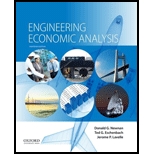
(a)
The percentage of family’s expenses that fit in their needs category.
Answer to Problem 31P
The percentage of family’s expenses that fit in their needs category is
Explanation of Solution
Given:
The after tax income of household is
The monthly expenses of the family are as shown below.
| Category | Monthly expenses |
| House payment | |
| Gasoline | |
| Phone/internet/TV | |
| Eating out | |
| Home maintenance | |
| Insurance and taxes | |
| Groceries | |
| Utilities | |
| Car payment | |
| Saving | |
| Vacation & entertainment |
Table (1)
Calculations:
The family’s expenses which fit in needs category are house payment, gasoline, home maintenance, car payment, insurance and taxes, groceries and utilities.
Calculate the percentage of family’s expenses that fit in needs category.
Conclusion:
Thus, the percentage of family’s expenses that fit in their needs category is
(b)
The percentage of family’s expenses that fit in the saving category.
Answer to Problem 31P
The percentage of family’s expenses that fit in the saving category is
Explanation of Solution
Calculations:
The family’s expense which fit in saving category is Saving.
Calculate the percentage of family’s expenses fitting in saving category.
Conclusion:
Thus, the percentage of family’s expenses that fit in the saving category is
(c)
The percentage of family’s expenses that fit in the wants category.
Answer to Problem 31P
The percentage of family’s expenses that fit in the wants category is
Explanation of Solution
Calculations:
The family’s expense which fit in wants category is Eating out, Phone/internet/TV, Vacation and entertainment.
Calculate the percentage of family’s expenses fitting in wants category.
Conclusion:
Thus, the percentage of family’s expenses that fit in the wants category is
(d)
The annual property tax paid as a part of house payment.
Answer to Problem 31P
The annual property tax paid as a part of house payment is
Explanation of Solution
Given:
The amount paid for fire insurance is
The mortgage payment is
Concept used:
Write the expression for mortgage payment.
Here, the mortgage payment is M, house payment is
Calculations:
Calculate the annual property tax.
Substitute
Conclusion:
Thus, the annual property tax paid as a part of house payment is
(e)
The before tax income of the family.
Answer to Problem 31P
The before tax income of the family is
Explanation of Solution
Given:
The family pays
Concept used:
Write the expression for before tax income.
Here, after tax income is ATI and tax paid is T.
Calculations:
Calculate the total tax paid.
Calculate the before tax income.
Substitute
Conclusion:
Thus, the before tax income of the family is
Want to see more full solutions like this?
Chapter 12A Solutions
Engineering Economic Analysis
- Use a game tree to illustrate why an aircraft manufacturer may price below the current marginal cost in the short run if it has a steep learning curve. (Hint: Show that learning by doing lowers its cost in the second period.) Part 2 Assume for simplicity the game tree is illustrated in the figure to the right. Pricing below marginal cost reduces profits but gives the incumbent a cost advantage over potential rivals. What is the subgame perfect Nash equilibrium?arrow_forwardAnswerarrow_forwardM” method Given the following model, solve by the method of “M”. (see image)arrow_forward
- As indicated in the attached image, U.S. earnings for high- and low-skill workers as measured by educational attainment began diverging in the 1980s. The remaining questions in this problem set use the model for the labor market developed in class to walk through potential explanations for this trend. 1. Assume that there are just two types of workers, low- and high-skill. As a result, there are two labor markets: supply and demand for low-skill workers and supply and demand for high-skill workers. Using two carefully drawn labor-market figures, show that an increase in the demand for high skill workers can explain an increase in the relative wage of high-skill workers. 2. Using the same assumptions as in the previous question, use two carefully drawn labor-market figures to show that an increase in the supply of low-skill workers can explain an increase in the relative wage of high-skill workers.arrow_forwardPublished in 1980, the book Free to Choose discusses how economists Milton Friedman and Rose Friedman proposed a one-sided view of the benefits of a voucher system. However, there are other economists who disagree about the potential effects of a voucher system.arrow_forwardThe following diagram illustrates the demand and marginal revenue curves facing a monopoly in an industry with no economies or diseconomies of scale. In the short and long run, MC = ATC. a. Calculate the values of profit, consumer surplus, and deadweight loss, and illustrate these on the graph. b. Repeat the calculations in part a, but now assume the monopoly is able to practice perfect price discrimination.arrow_forward

 Principles of Economics (12th Edition)EconomicsISBN:9780134078779Author:Karl E. Case, Ray C. Fair, Sharon E. OsterPublisher:PEARSON
Principles of Economics (12th Edition)EconomicsISBN:9780134078779Author:Karl E. Case, Ray C. Fair, Sharon E. OsterPublisher:PEARSON Engineering Economy (17th Edition)EconomicsISBN:9780134870069Author:William G. Sullivan, Elin M. Wicks, C. Patrick KoellingPublisher:PEARSON
Engineering Economy (17th Edition)EconomicsISBN:9780134870069Author:William G. Sullivan, Elin M. Wicks, C. Patrick KoellingPublisher:PEARSON Principles of Economics (MindTap Course List)EconomicsISBN:9781305585126Author:N. Gregory MankiwPublisher:Cengage Learning
Principles of Economics (MindTap Course List)EconomicsISBN:9781305585126Author:N. Gregory MankiwPublisher:Cengage Learning Managerial Economics: A Problem Solving ApproachEconomicsISBN:9781337106665Author:Luke M. Froeb, Brian T. McCann, Michael R. Ward, Mike ShorPublisher:Cengage Learning
Managerial Economics: A Problem Solving ApproachEconomicsISBN:9781337106665Author:Luke M. Froeb, Brian T. McCann, Michael R. Ward, Mike ShorPublisher:Cengage Learning Managerial Economics & Business Strategy (Mcgraw-...EconomicsISBN:9781259290619Author:Michael Baye, Jeff PrincePublisher:McGraw-Hill Education
Managerial Economics & Business Strategy (Mcgraw-...EconomicsISBN:9781259290619Author:Michael Baye, Jeff PrincePublisher:McGraw-Hill Education





